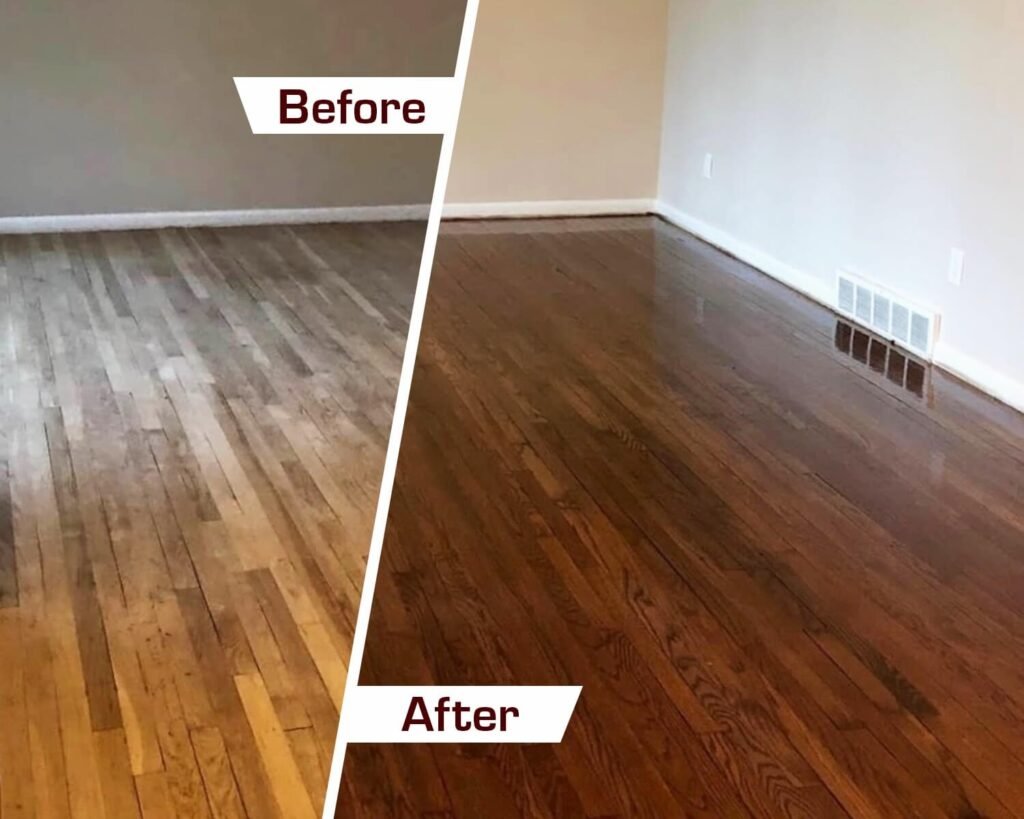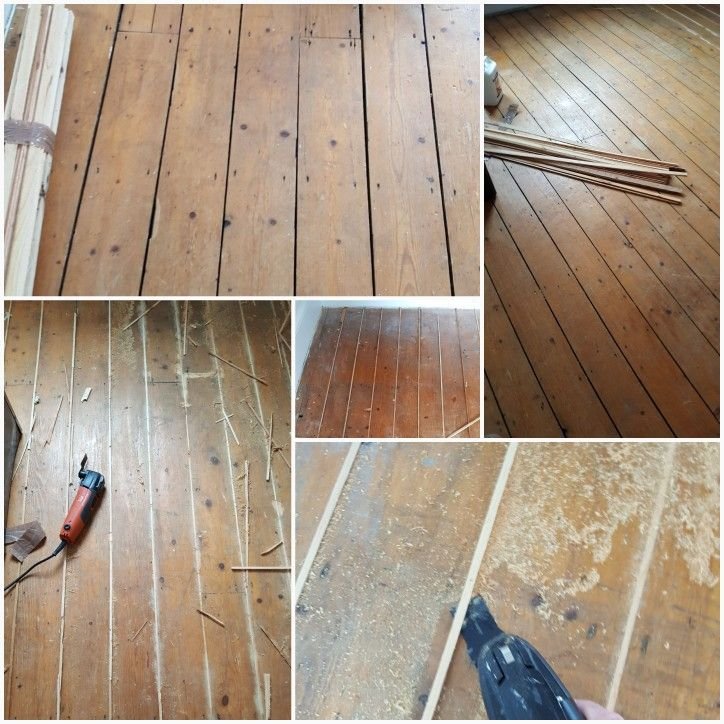Wood Floor Polishing
Wood floor polishing is the process of restoring and enhancing the appearance of a wooden floor by applying a protective layer and buffing it to achieve a glossy finish. It helps to remove scratches, scuffs, and other signs of wear and tear, making the floor look new and revitalized.

There are different types of wood floor polishing methods, including:
- Oil-based polishing: This method involves applying oil-based products to the wood floor to enhance its natural color and provide a protective layer.
- Water-based polishing: Water-based polishes are environmentally friendly and offer a low odor. They provide a clear finish and are easy to apply and clean up.
- Wax polishing: Wax is a traditional method of polishing that involves applying a layer of wax to the floor and buffing it to a shine. It provides a warm, natural finish and can be reapplied as needed.
- Polyurethane polishing: Polyurethane is a durable and long-lasting option for wood floor polishing. It forms a protective layer that helps to prevent scratches, stains, and moisture damage.
Concerns of wood floor polishing
- Surface preparation: Before polishing, the floor needs to be properly cleaned and any existing coatings or finishes should be removed. This ensures that the new polish adheres well and provides a smooth finish.
- Floor condition: If the wood floor has deep scratches, gouges, or other significant damage, polishing may not be sufficient to restore its appearance. In such cases, sanding or refinishing may be necessary.
- Compatibility: It’s important to choose a polish that is compatible with the type of wood and finish of the floor. Using the wrong polish can result in an uneven or unsatisfactory finish.
- Maintenance: Regular maintenance is required to keep the polished floor looking its best. This includes proper cleaning techniques, avoiding excessive moisture, and using furniture pads to prevent scratches.


Procedures of Wood Floor Polishing
- Preparation: Clear the room of furniture and rugs. Sweep or vacuum the floor to remove any dirt, dust, or debris. If there are any existing coatings or finishes, they may need to be removed using sanding or stripping methods.
- Repair and sanding (if necessary): If the wood floor has deep scratches, gouges, or unevenness, it may require repair or sanding. This step helps to create a smooth and even surface for polishing.
- Cleaning: Thoroughly clean the floor using a wood floor cleaner or mild detergent mixed with water. Ensure that the floor is completely dry before proceeding to the next step.
- Application of polish: Apply the chosen polish to the floor using a clean, lint-free cloth or a mop. Follow the manufacturer’s instructions for the specific type of polish being used. Apply the polish in even and thin coats, working in small sections.
- Drying time: Allow the polish to dry according to the manufacturer’s instructions. This can take several hours or even overnight, depending on the type of polish.
- Buffing: Once the polish is dry, use a floor buffer or a buffing machine with a polishing pad to buff the floor. This step helps to enhance the shine and smooth out any imperfections.
- Repeat (if necessary): Depending on the desired level of shine and the condition of the floor, it may be necessary to repeat the application and buffing process for multiple coats of polish.
- Maintenance: After the floor has been polished, it’s important to follow proper maintenance techniques to keep it looking its best. Regularly sweep or vacuum to remove dirt and debris, use a wood floor cleaner for routine cleaning, and avoid excessive moisture or harsh chemicals that can damage the polish.
